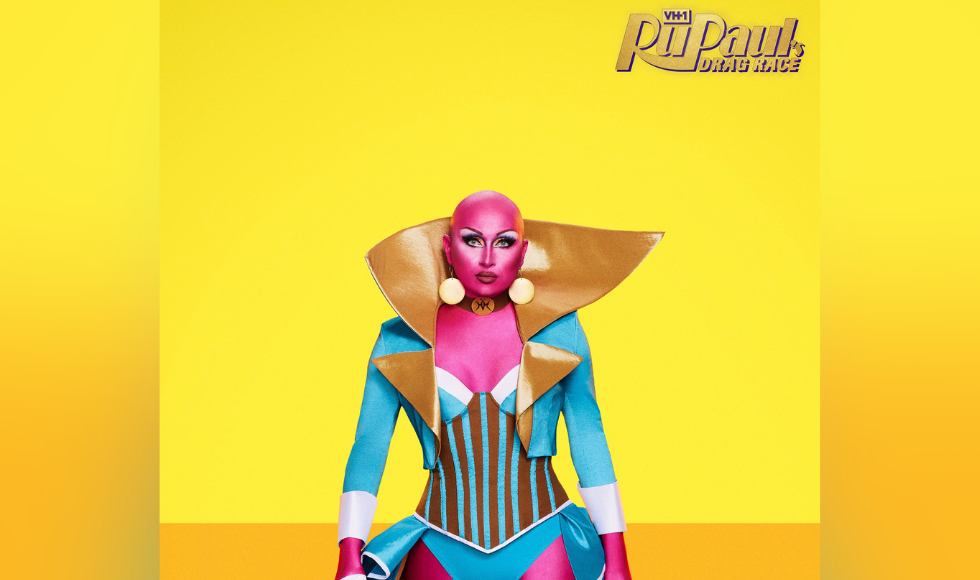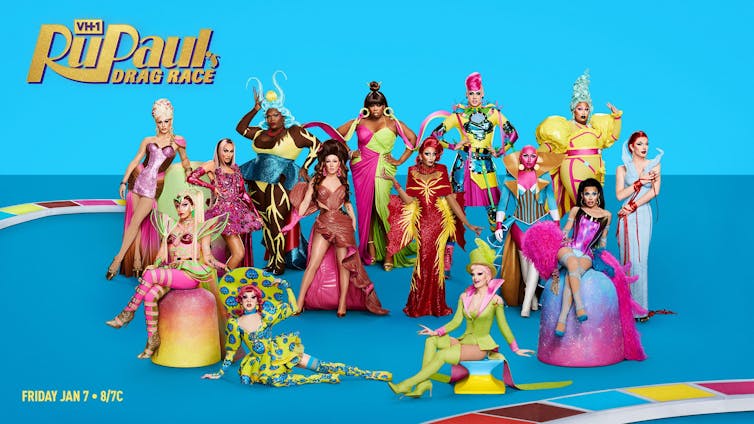Analysis: RuPaul’s Drag Race contestant Maddy Morphosis sparks conversations about cishet inclusion and queer discomfort

Maddy Morphosis was the first straight, cisgender man on RuPaul’s Drag Race. (VH1)
BY Theresa N. Kenney and Linzey Corridon
February 15, 2022
In recent years, RuPaul’s Drag Race and its spin-offs have welcomed several transgender, nonbinary and lesbian cisgender performers to the franchise.
Now in its 14th season, the Emmy award winning reality TV program features Maddy Morphosis, its first heterosexual cisgender contestant. Yup, that’s right: a straight cis-man could have made “herstory” as “America’s Next Drag Superstar.”
While Drag Race has been a force in discussing non-normative gender presentation and performance on mainstream TV, it has brought with it controversy and conversations about inclusion.
By casting Maddy Morphosis, the show has opened itself up to new fan commentary.
Some are writing in defence of the choice, arguing that a diverse cast inclusive of heterosexual cis-men speaks back to toxic masculinity by inviting the idea that any performer can take part in the art of drag regardless of gender or sexuality.
Others are more concerned about how her presence invades queer spaces since, as Maddy Morphosis herself notes, “straight men are not a persecuted and excluded group within the drag community.”
Mad(dy) props, @MaddyMorphosis ? #DragRace pic.twitter.com/LUANXW3To7
— RuPaul's Drag Race (@RuPaulsDragRace) January 15, 2022
Both sides take on what political scientist Cathy J. Cohen describes as “a monolithic understanding of heterosexuality and queerness,” causes the conversation around Maddy Morphosis to be all about the pros and cons of inclusivity.
But there are many “complicities, collusions, and costs of inclusion.” So, what does it mean to have white straight cis-men take up space in such a public drag scene, beyond the need for so-called inclusivity?
Hollow understandings of diversity and inclusion
As much as drag is a longstanding performance art, it is also a queer culture indebted to people of colour, and Black and Latinx drag ballroom communities in particular.
During the growing white gay liberation movement, low-income queer people of colour were gathering to form safe spaces in New York City and elsewhere. Ballroom culture still offers space for participants to express their sexuality and gender, while also finding chosen family to help survive against racist, homophobic and transphobic violence.
These safe spaces, time and time again, have been capitalized upon by recent media to shamelessly profit off of a contemporary consumer society and culture that champions hollow understandings of diversity and inclusion. Drag Race is no different.
It should come as no surprise then that Maddy Morphosis’s casting is a twist that overshadows more than six decades of documented queer performance art within carefully crafted safe spaces, all to establish the franchise’s first heterosexual cis contestant into the queer RUniverse.

Discomfort by Maddy Morphosis’s inclusion
Recent discussions within the 2SLGBTQIA+ movement centre both the discomforts faced by members of these communities and addressing or remedying these discomforts. It is a tried-and-true cycle that continues to result in certain improvements to the community’s everyday life.
From mental health services to the right to get married, a series of grievances — and responses to these grievances — remain at the foundation of the movement’s ethos, which traditionally seeks to provide care and a better quality of life for all members of the wider queer community.
Drag Race’s recent addition to the franchise requires that we consider members of the community who feel genuine discomfort by Maddy Morphosis’s controversial inclusion. How can acute care and support be extended to those who identify as bisexual, pansexual, asexual, intersex or drag kings?
These are members of the wider community who have yet to see, and yearn for, meaningful discussion and representation to unfold around their identities on the show.
In a contemporary queer culture where burlesque superstar and Drag Race winner, Violet Chachki, is kicked out of a gay club because she does not exude a certain level of masculinity — a reminder of how contemporary queer spaces and peoples can continue to uphold heterosexual norms and expectations dictating sexuality and gender expression — it is time to address which issues the 2SLGBTQIA+ community and Drag Race should bring to the forefront on one of the queer community’s most influential platforms.
This is now a Violet Chachki stan account. She IS the moment. @VioletChachki pic.twitter.com/D9CAjsgHN9
— Dominic T (@turneadominic19) February 1, 2022
For the sake of shock value
The media’s obsession with shock value can emphasize the initial shock a possible scene or character might hold. Of equal importance is the ongoing debate and hyperfocus on determining the values for being a meaningful ally to the 2SLGBTQIA+ community.
This season’s casting of Maddy Morphosis continues to reveal how shock is both material and playful, but also holds the immaterial potential to cause genuine harm and discomfort to some members of the 2SLGBTQIA+ community who eagerly await their chances to shine, inevitably trailing in the shadows of the franchise’s veneration of the first heterosexual cis contestant and ally.
That choice puts racialized queer histories, community discomfort and modes of allyship to the backseat all for the sake of shock-value inclusion.![]()
Theresa N. Kenney, PhD Candidate in English and Cultural Studies, McMaster University and Linzey Corridon, Vanier Scholar and PhD researcher, Department of English and Cultural Studies, McMaster University. This article is republished from The Conversation under a Creative Commons license. Read the original article.


